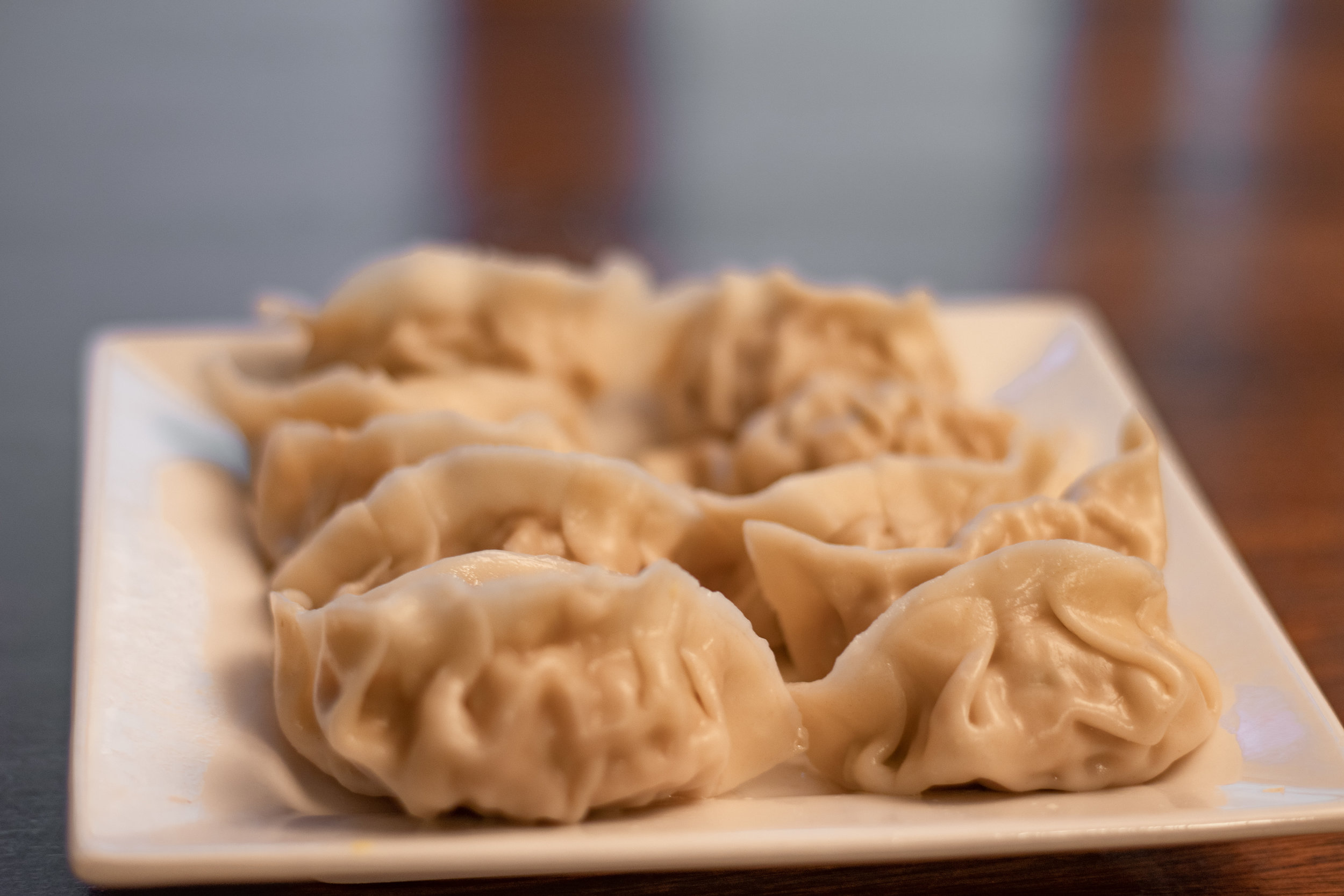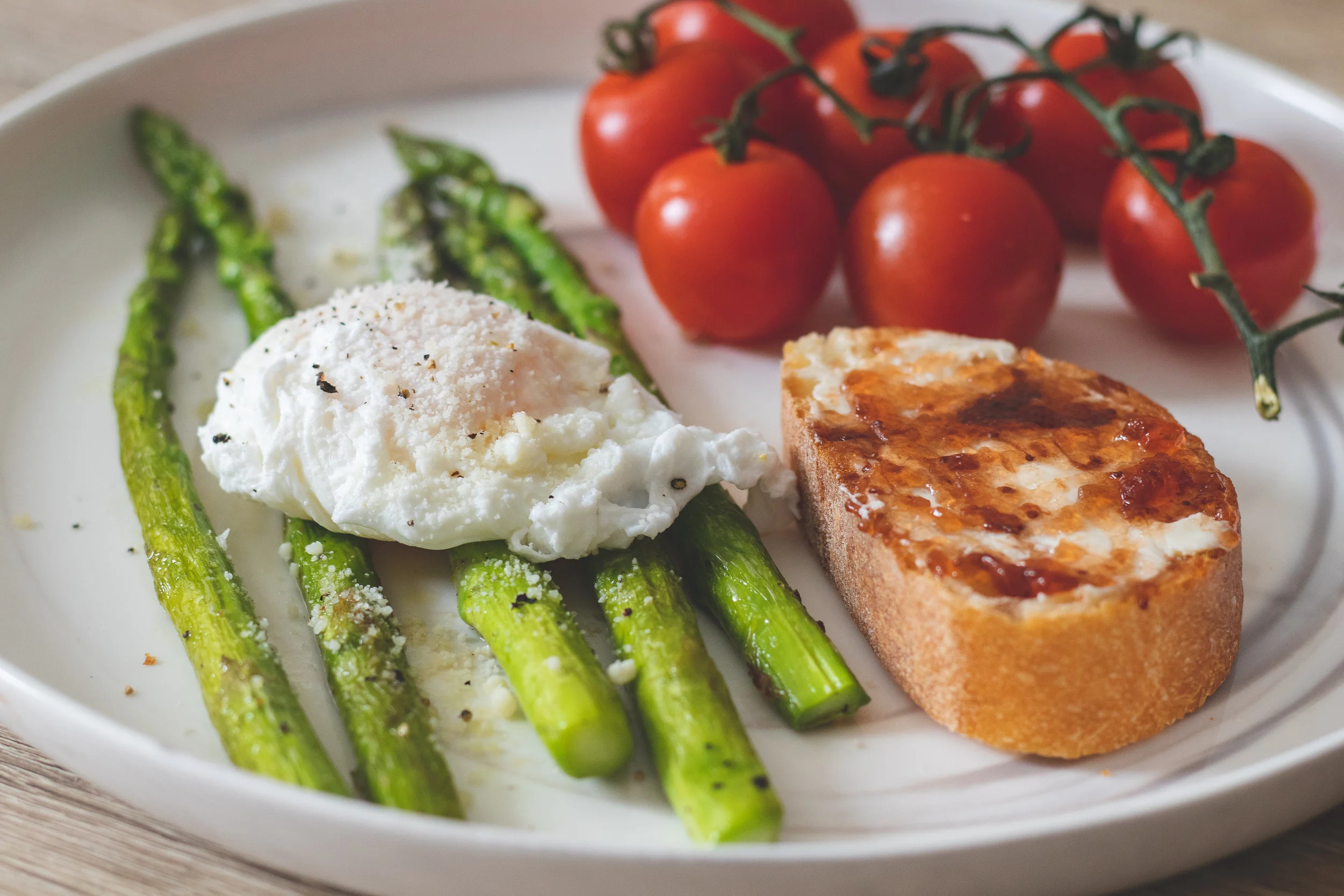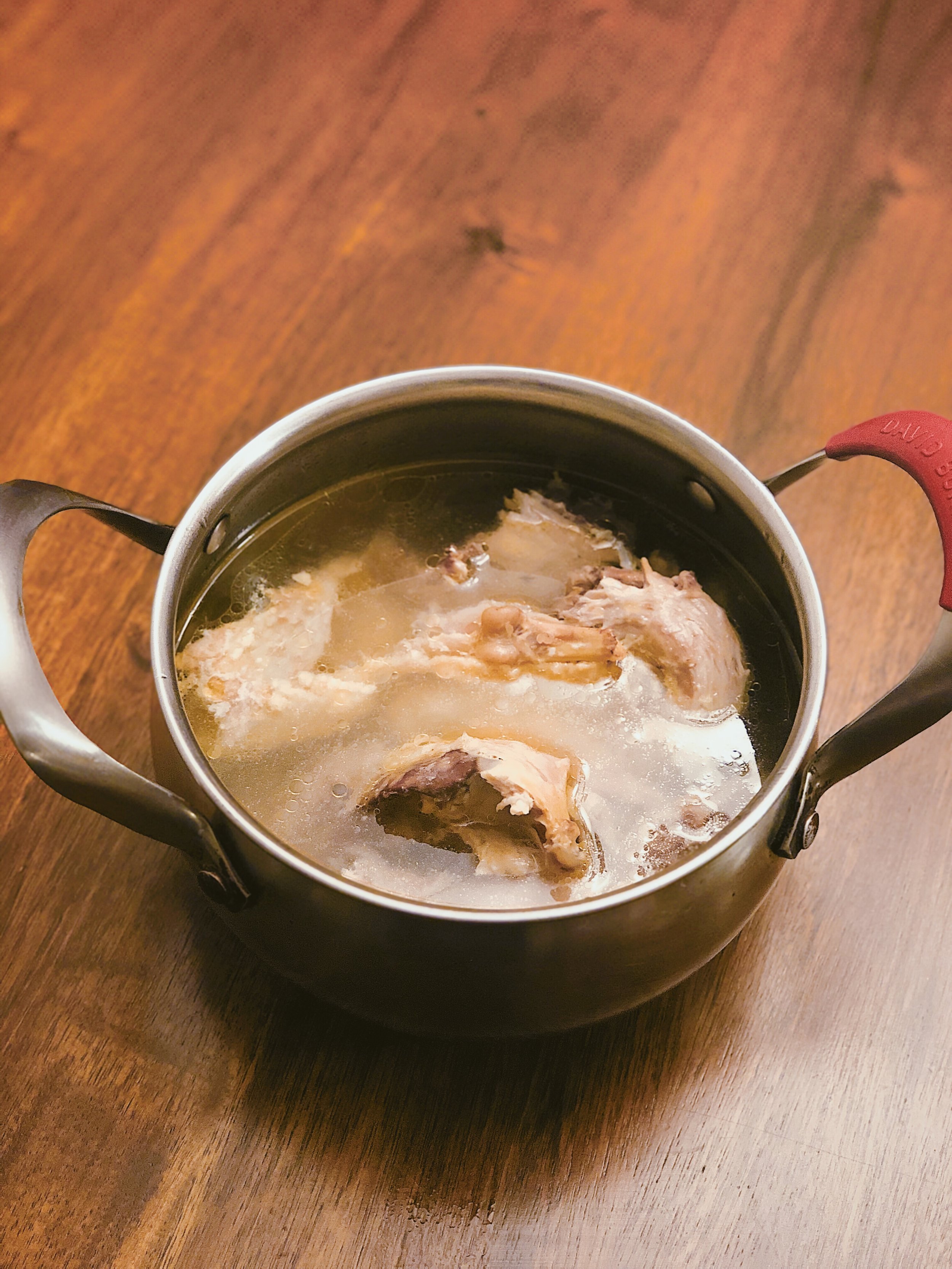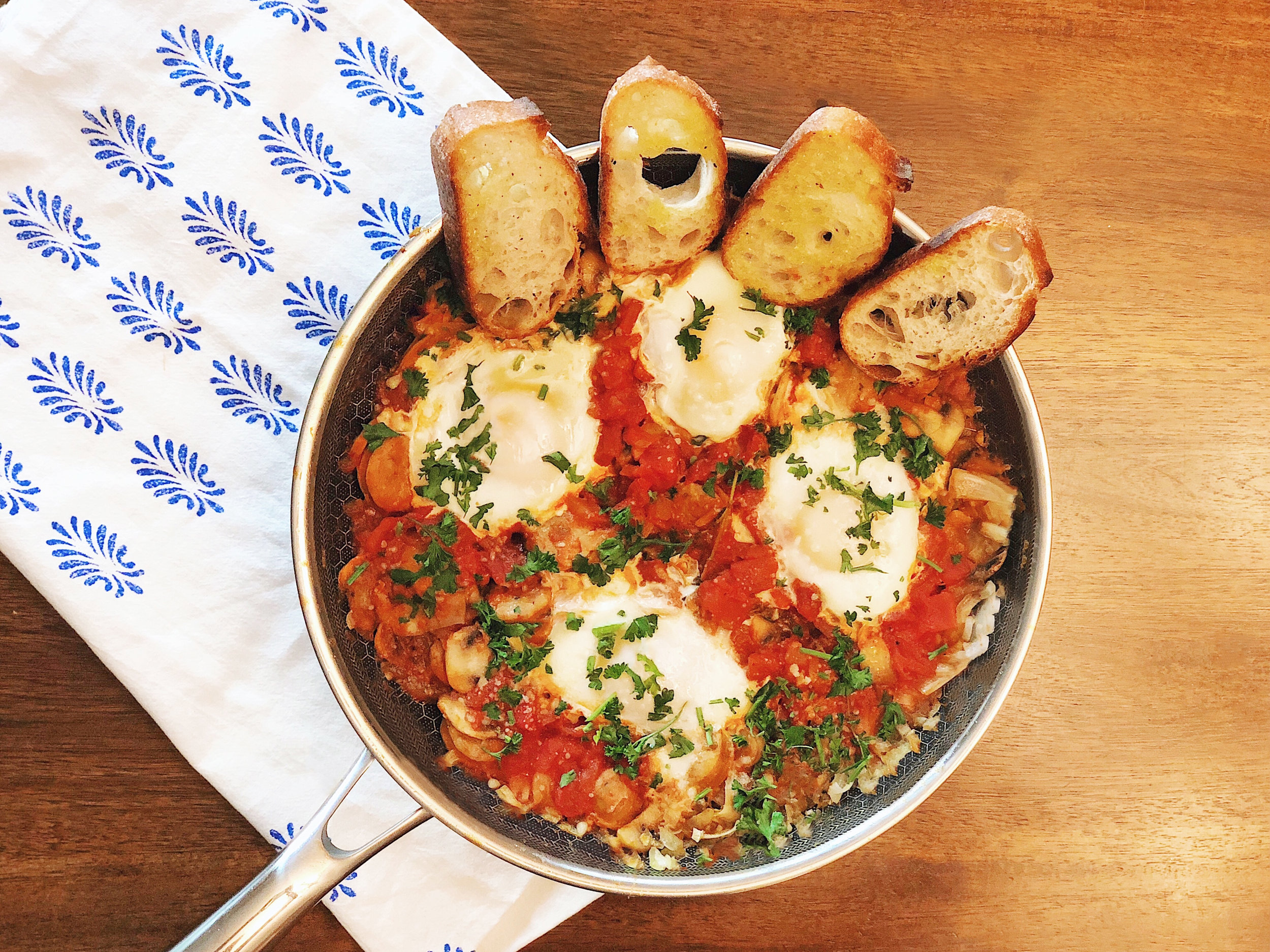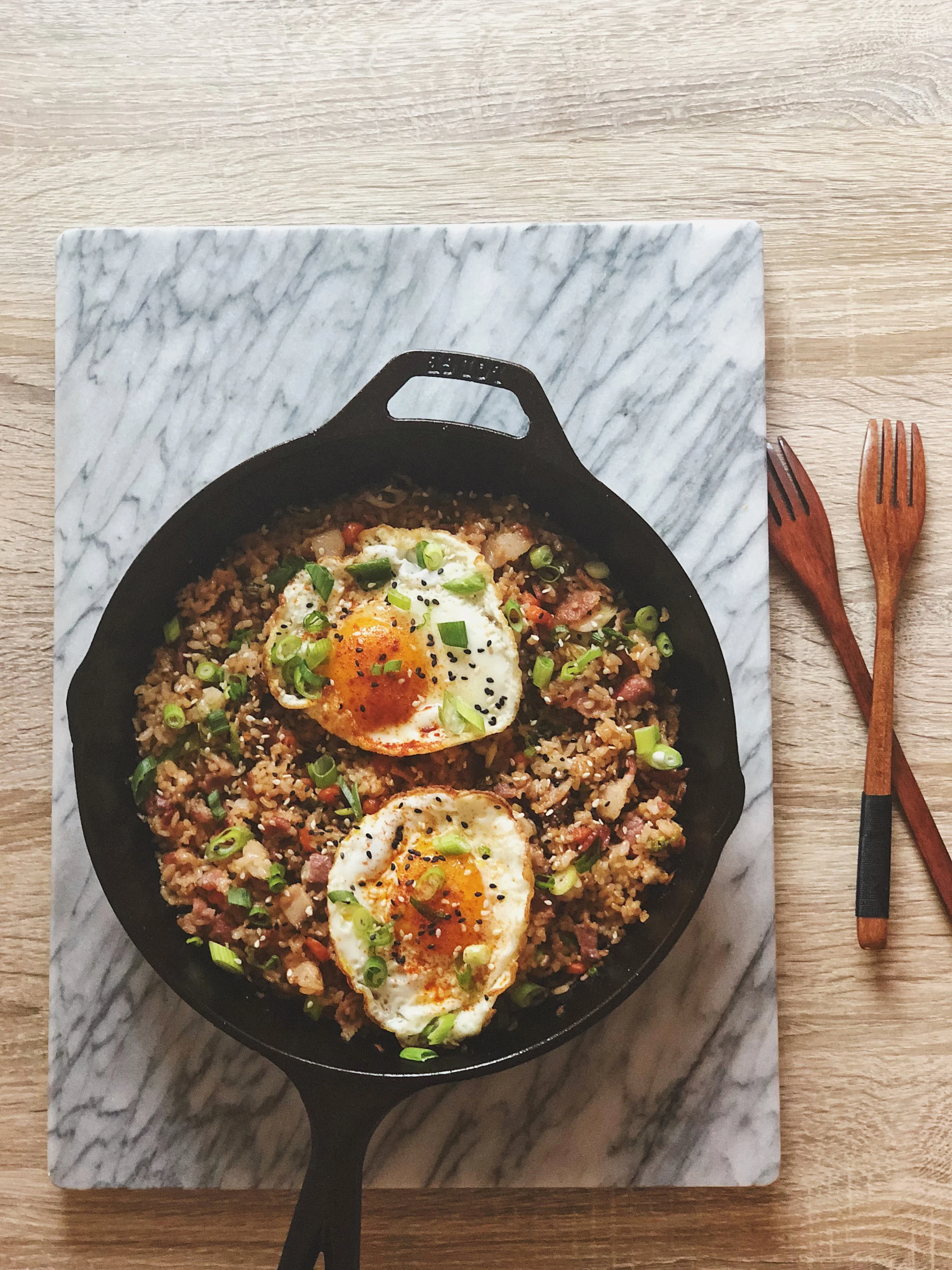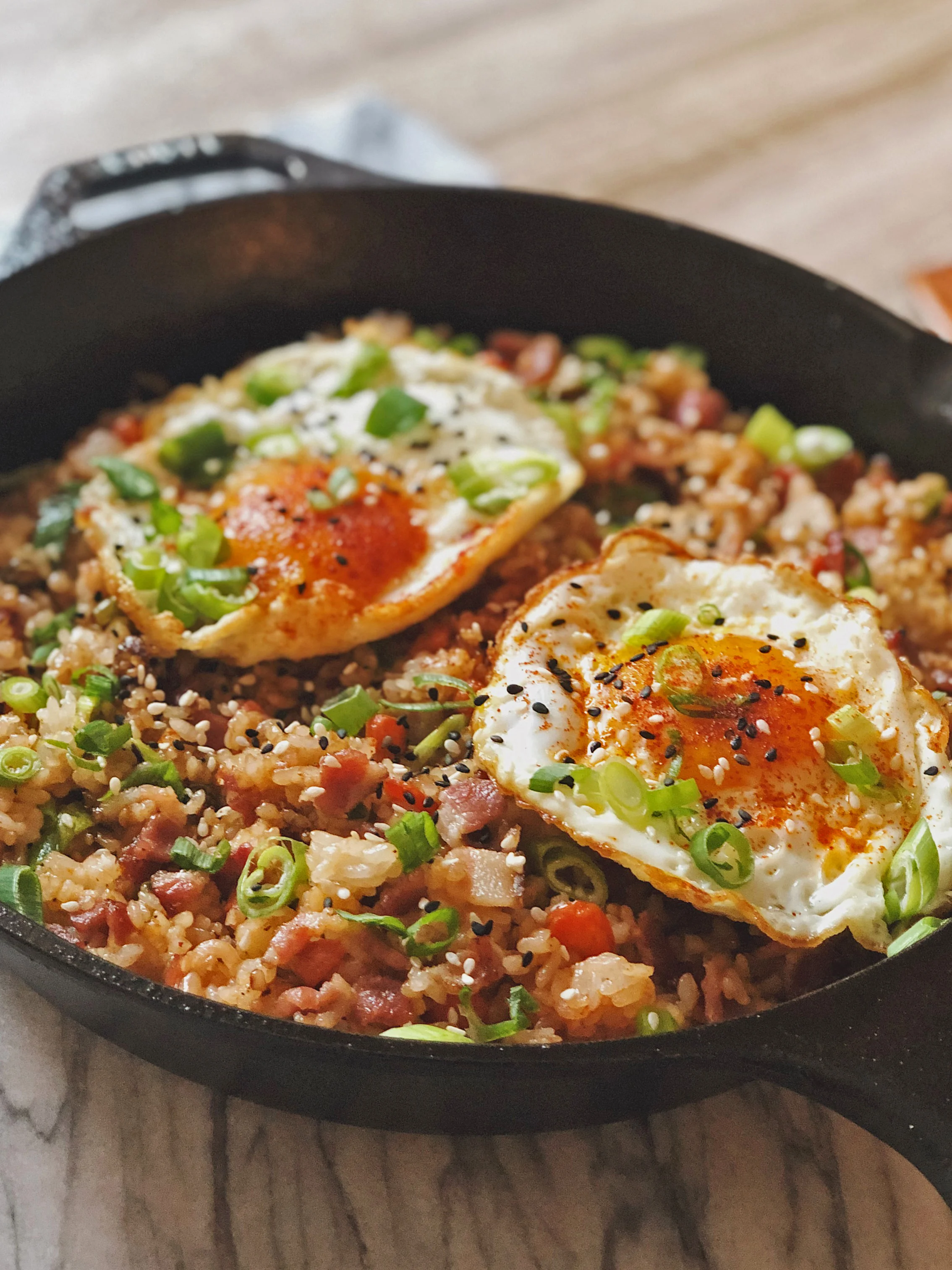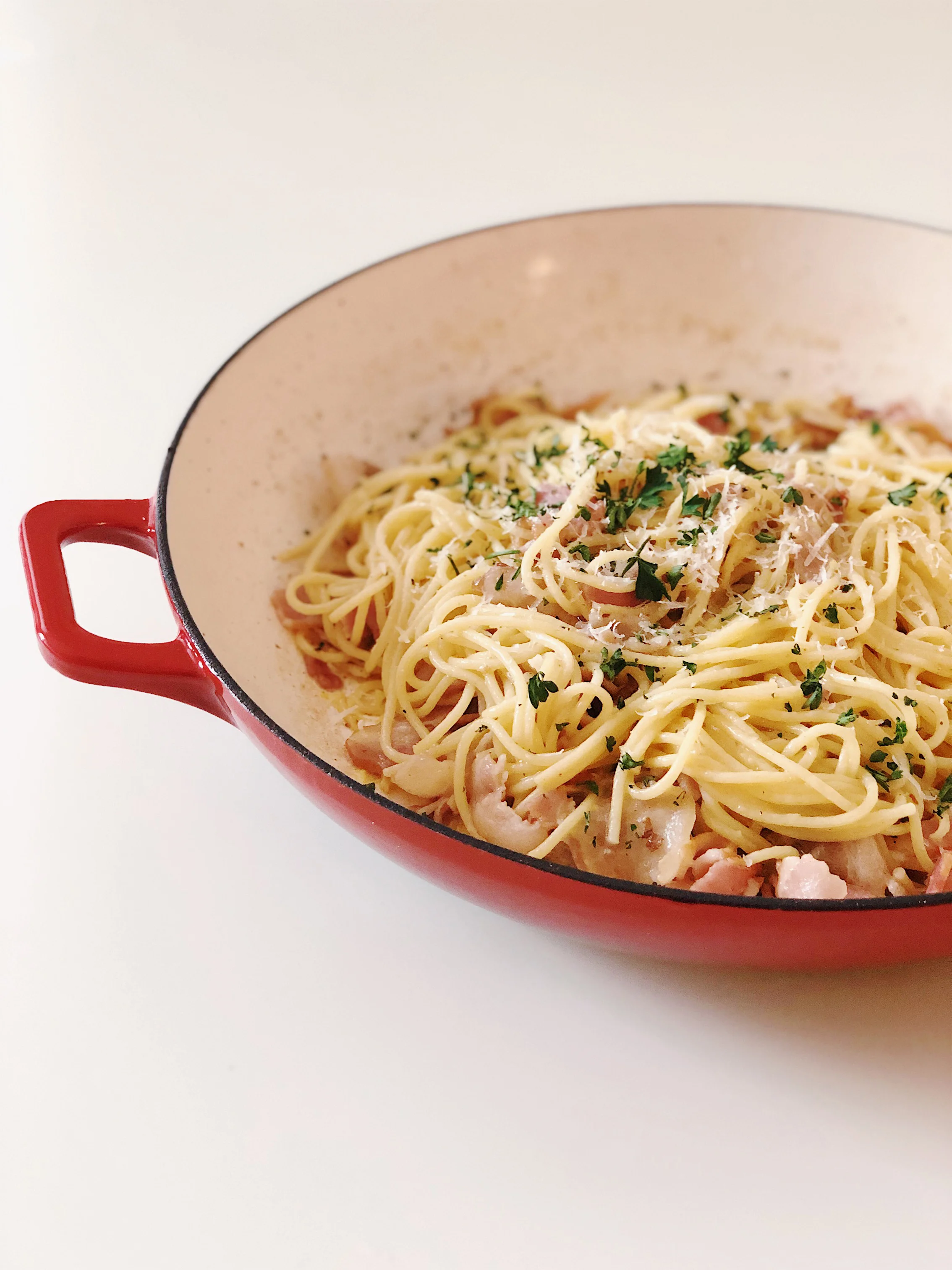Watch the video for a in-depth tutorial on how to make this dish. If you enjoyed watching, please give me a thumbs up/subscribe to me on YouTube!
How to make Gyoza | potstickers | dumplings | 餃子
Today we’re making one of my all-time favorite things to eat: potsticker dumplings, otherwise known as gyoza. We’ll be making them with 2 different fillings: pork and napa cabbage (from my mom’s recipe) as well as chicken and dried shiitake mushrooms.
Gyoza might seem pretty intimidating, but they’re actually really easy to make on weekends for meal prep on weekdays. If you don’t want to cook all of your dumplings right away, you can freeze them and eat them throughout the week. Just make sure you arrange them in a flat layer when you’re freezing them so that they don’t stick together.
You can’t go wrong with the classic pork and napa cabbage filling. I’ll show you my mom’s recipe, which I grew up eating. You’ll need: ground pork, napa (or Chinese) cabbage, scallions, eggs, minced ginger & garlic, vegetable or canola oil, cornstarch, white or black pepper, soy sauce, and salt.
We want to make sure the cabbage doesn’t release too much water into our dumplings. To make the cabbage give up its moisture, sprinkle some salt onto the cabbage and set it aside for 30 minutes. Note that different types of cabbage and different parts of the cabbage itself may release more water than others.
Chicken and dried shiitake mushrooms are a classic pairing in Chinese cuisine. For this filling, you’ll need: ground chicken, dried shiitake mushrooms (soaked overnight), water from soaking the mushrooms, carrots, scallions, eggs, minced ginger & garlic, cornstarch, soy sauce, sesame oil, and salt.
Most of the time, store-bought ground chicken is made from chicken breast—which I’m not a big fan of. So, if you’re really finicky about this stuff like me, you can make your own ground chicken by mincing some boneless chicken thigh (which will make a much more tender filling).
Rumor has it that you should only mix the filling in one direction to keep the meat tender and juicy. I’m not sure if this is scientifically proven or if it’s just an old Chinese myth, but my mom swears by it. Happy mom = happy life, and happy wife = happy life, so my dad and I just do it for kicks.
One of the hardest things about making dumplings is how finely you have to chop the vegetables. You can easily make a mess in the kitchen (and even hurt your fingers) by chopping all of these vegetables into tiny pieces. Instead, I recommend using a food processor to chop your veggies, if you have one, to make your job 10 times easier.
How to fold dumplings
1) Put some filling into the center of the wrapper and add some water to the edges. The water will help the sides stick together.
2) Fold it half way and pinch it in the center. Add more water on the edges of the outside layer, specifically on the side where you intend to create the folds.
3) Fold in the open flaps, kind of like you’re sealing an envelope. Start with fold that’s closest to the middle, and fold the wrapper in until it aligns with the top of the wrapper.
4) Create a second fold with the flap, also aligning it with the top of the wrapper.
5) Create two more folds on the other side, symmetrical to the ones you already made.
6) Pinch the top edges to ensure that it’s completely sealed. We wanna make sure the edges really stick together so that the dumpling doesn’t open up when we boil it or fry it.
16 oz of meat will usually make around 40 to 50 dumplings, depending on how much filling you put into each one. If you’re not too confident in your wrapping skills, you can start off by using a smaller amount of filling in your dumplings. It’ll be a lot easier, trust me!
Voilà! You’re done!
My mom literally makes 5 of these while I make 1.
Secret to giving your gyoza wings: Nope, not red bull. Cornstarch and water, actually! Most people will just pour water into the pan to steam them, but I like to stir in a little bit of cornstarch or potato starch (or even flour) into my water before I add it to the pan. Another trick to making them super presentable is to arrange the gyoza in a windmill shape in an 8-inch nonstick pan, put a plate over them once they’re done, and flip the pan onto the plate.
Not so much into frying these babies? You can make a healthy(ish) version by steaming them or boiling them! Just be sure not to boil them for too long until they’re soggy (you can avoid this by boiling them without the lid for the last few minutes), but also boil them long enough to ensure the meat is cooked. The hardest part is deciding which one tastes better: the pan fried ones, or the boiled ones?
Answer: porque no los dos?
Gyoza 2 Ways: Pork & Cabbage, Chicken & Mushroom
Ingredients for Pork & Cabbage gyoza
- 40-50 store-bought gyoza wrappers
- 16 oz ground pork
- 2 eggs
- ½ cup chopped scallions
- ½ stalk of Napa (or Chinese) cabbage, around 2 cups after they've been chopped and dehydrated*
- 1 tsp minced ginger
- 1 tsp minced garlic
- 2 tsp soy sauce
- 1 tbsp oil
- 2 tsp cornstarch or potato starch
- 2 tsp salt
- sprinkle of white or black pepper
* You'll need to dehydrate the cabbage so the dumpling filling isn't watery and soggy
Ingredients for Chicken & Mushroom gyoza
- 40-50 store-bought gyoza wrappers
- 16 oz ground chicken
- 2 eggs
- ½ cup chopped scallions
- 1 cup diced carrots
- 1 cup diced dried shiitake mushrooms that have been soaking in water
- 1 tsp minced ginger
- 1 tsp minced garlic
- 2 tsp soy sauce
- 2 tsp sesame oil
- 2 tsp cornstarch or potato starch
- 2 tsp salt
- 2 tbsp soy sauce
- 1 tbsp water that shiitake mushrooms have been soaking in (optional)
Ingredients for the slurry
- 3 tbsp water
- 2 tsp cornstarch/potato starch/flour
Takes , Makes 8 servings for each filling, which each person eating around 5 dumplings.
Instructions for the Pork & Napa Cabbage Filling
- Finely chop the Napa cabbage. If you have a food processor, use it to do all the chopping for you to avoid the mess :)
- We want to make sure the cabbage doesn’t release too much water into our dumplings. Sprinkle some salt onto the cabbage to help it lose some of its moisture and set aside for 30 minutes.
- After setting it aside, squeeze out all the water from the cabbage and put it into a strainer. Note that different types of cabbage and different parts of the cabbage itself may release more water than others. After squeezing out all the water, you should be left with about 2 cups of cabbage to balance out 16 oz of ground pork.
- Combine the ground pork, cornstarch, soy sauce, eggs, ginger, garlic, white pepper, salt, and cabbage in a large heat-proof bowl. Stir the mixture in one direction to keep the meat tender and juicy. Add the scallions on top of the mixture but don't stir it in yet.
- Heat up a tablespoon of oil in a small pan until it reaches its smoking point. Pour the hot oil onto the scallions and your mixture. The hot oil will make the scallions release their natural oils and flavor. Be careful not to burn yourself while pouring in the hot oil. Stir the oil into the mixture, going in one direction.
Instructions for the Chicken & Mushroom Filling
- Soak 6 dried shiitake mushrooms in some water and leave them in the fridge overnight or until they're soft. You’ll tell when they’re fully soaked through by checking if the stems are soft enough to cut through. Dry them off on a paper towel and chop them into small pieces.
- Combine the ground chicken, cornstarch, soy sauce, sesame oil, eggs, ginger, garlic, salt, shiitake mushrooms, and diced carrots in a large bowl. Stir the mixture in one direction to keep the meat tender and juicy.
Instructions for Pan-frying
- Heat some canola or vegetable oil in an 8 to 10 inch frying pan and swirl it around to make sure the bottom is completely covered. Arrange the dumplings in a nice shape, so that it looks pretty when we flip it out of the pan. Fry them for about 30 seconds without water to let the bottom brown up a bit.
- Mix 2 tsp of cornstarch with 3 tbsp of water and add it to the pan. The water should cover up about 60-70% of the dumpling. Put a lid on the pan and steam the dumpling for about 5-6 minutes, or until most of the water has evaporated.
- After that, cook the dumplings without the lid for 1-2 minutes for a nice brown crust to develop. Keep a close eye on them to make sure the bottoms don’t burn.
- When you see the brown edges forming, put a plate over pan and flip it over. This will make sure the potstickers stay together and create a really beautiful presentation
Instructions for boiled dumplings
- Bring water to a boil in a wok and add in 10-15 dumplings, stirring them constantly to make sure they don't stick together. Immediately put a lid over them.
- When the water comes to a rolling boil, add in about 1 cup of water and put a lid on the pan. Continue stirring them with a ladle if they're sticking together.
- Let the water come to a rolling boil again, and add a second cup of water. Cook them for a few minutes without the lid. They should be finished cooking when they float to the surface.
This is a super fun food to make with friends! Why not try hosting a dumpling-making party? If you tried these, let me know how it turns out for you by tagging @cinders_zhang on Instagram! Support me by saving this recipe on Pinterest, and subscribing to my Youtube channel :) Good luck in the kitchen!
♥ Cindy















